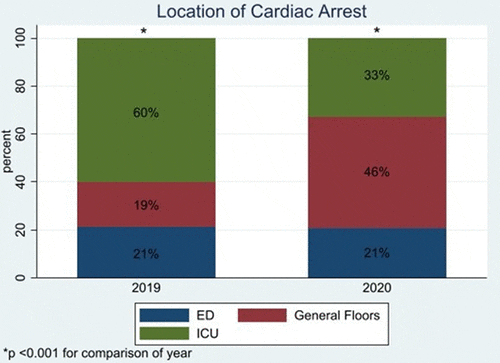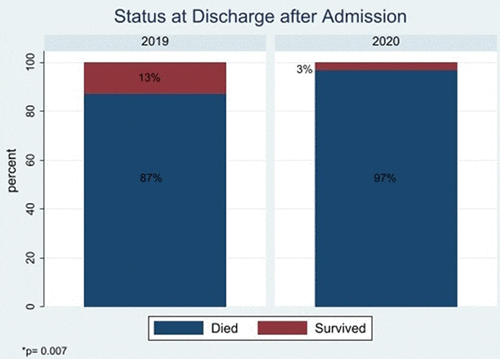In-hospital cardiac arrest (IHCA) played a major role during the peak of the COVID-19 pandemic. The unpredictability and the high number of COVID cases forced hospitals to place patients outside of critical care units. This means that IHCA events happen in locations where providers might not be prepped in cardiac arrest care guideline adherence. Electronic documentation and training improvements may benefit the clinicians and patients in these situations.
Advanced cardiac life support (ACLS) and cardiopulmonary resuscitation (CPR) have become mainstays during IHCA to improve survival in patients who experience an IHCA. Since 2010, studies have illustrated a ≈20% survival rate in IHCAs.
Many of these established aspects of cardiac arrest care, including ACLS and CPR, continued to play a significant role during the COVID-19 pandemic. Below are the characteristics and outcomes of a New York City public hospital during cardiac arrest events during the COVID-19 pandemic.¹
There was an increase in IHCA between 2.5-3.5% in the incidence during the COVID period of March-May 2020. However, this underestimates the actual number of COVID arrests because the numbers of non-COVID patients who would have entered the hospital and experienced an IHCA decreased as the ICUs were overrun with COVID patients.
The location of IHCA during the COVID period changes dramatically. Pre-COVID IHCA occurred: 60% in the ICU, 19% on a general in-patient service, and 21% in the emergency department; During COVID: 46% in ICU, 33% in general in-patient services, 19% in the emergency department.

In terms of overall outcomes after initial IHCA, more patients achieved ROSC when initial cardiac arrest in the 2019 cohort compared with during the COVID-19 pandemic (56% versus 36%; P=0.001).
Only 3% of patients survived an IHCA and were discharged from the hospital during the 2.5 months of the COVID-19 pandemic (compared with 13% in 2019 before the Pandemic [P=0.007] or 18.3% survival in 2018).

We know that aspects of cardiac arrest care have differed significantly during the COVID 19 surge and that survival or IHCA decreased during the peak of the COVID pandemic. Based on the numbers above, we can imply that a significant number of IHCAs are happening in locations where providers might not be well-versed in IHCA guideline adherence. Additional training and software changes are both viable options for improving code blue response during these times. Each effort to improve code blue performance can assure better data collection, improve team performance, and improve overall care quality.
Improvements in cardiac arrest care can help manage the complexity of the cardiac arrest events during COVID. RevitalPro enables better code blue performance with an intuitive digital interface that records and guides code blue documentation. In-system checks search for common mistakes and offer reminders at timed intervals for each epinephrine dose and additional compressions. Issues with illegible handwriting are eliminated, and teams can immediately deliver each code blue event’s documentation to the care unit. To view a short video and learn more about RevitalPro, fill out the form below.

Dr. Brian Ross, M.D., Ph.D
Former Chair of the Code Committee at University of Washington Medical Center and founder of the WWAMI Institute for Simulation in Healthcare
